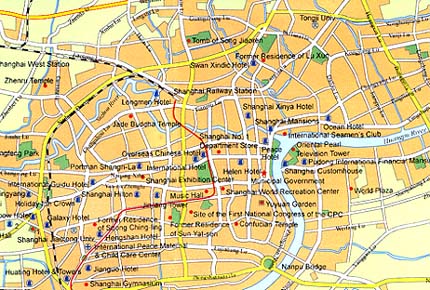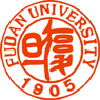Shanghai tények és körzeti útmutató
A kelet-kínai Jangce-delta partján fekvő Sanghaj a Kínai Népköztársaság legnagyobb városa és a világ hetedik legnagyobb városa. A világ egyik legforgalmasabb kikötőjével Sanghaj az ország egyik legfontosabb kulturális, kereskedelmi, pénzügyi, ipari és kommunikációs központjaként is szolgál. Sanghaj közigazgatásilag a Kínai Népköztársaság egyik települése, amely tartományi szintű státusszal rendelkezik.
Sanghaj eredetileg halászváros volt, jelenleg Kína egyik legfontosabb városa. A város gyakran tükrözi a köztársaság popkultúráját, szellemi fejlődését és politikai rendszereit. A tizenkilencedik század végén és a huszadik század elején Sanghaj a világ harmadik legnagyobb pénzügyi központja volt, New York City és London után, és Ázsia legnagyobb kereskedelmi városa.
Az 1949-es kommunista hatalomátvétel után Sanghaj elsorvadt, mert a központi kormányzat súlyosan megadóztatta, és megszűntek a külföldi befektetések, megtisztítva a várost "burzsoá" elemeitől. 1992-ben a központi kormány engedélyezte a piacgazdaságot, amely újrafejlesztette Sanghajt. A város mostanra megelőzte a korán induló Sencsent és Kantont, ami Kína ugrásszerű gazdasági növekedését vezeti. Ennek ellenére továbbra is kihívások maradnak, mivel a város gazdasági egyenlőtlenségekkel és elsöprő számú migráns munkavállalóval küzd. Mivel a kihívásokat még le kell küzdeni, Sanghaj virágzó gazdasága és életmódja Kína közelmúltbeli gazdasági fejlődését mutatja.
Shanghai város tényei
Shanghai kerületi útmutató
| Lakosság |
17 millió |
| Földterület |
6200 négyzetkilométer |
| Megyei szintű osztályok |
19 |
| A körzetek száma |
18 járás + 1 megye |
| Országkód |
86 |
| Városkód |
21 |
| Irányítószám |
200 000 - 202 100 |
| Község |
18.670.000 km2 |
| Magasság |
43,5 méter (142,7 láb) |
| Sűrűség |
2945 / km2 (7627,5 / négyzetmérföld) |
| Fő lakosok |
A han nemzetiség a teljes lakosság 99%-át teszi ki |
| Vallás |
Kína hivatalosan ateista, de hagyományosan pragmatikus és eklektikus. A lakosság mintegy 2-3%-a gyakorolja a taoizmust (taoizmust), a buddhizmust és az iszlámot. Becslések szerint 1%-a keresztény. |
| Nyelvjárás |
Shanghai dialektus; hivatalos kormánynyelv a mandarin. |
| Villany |
220 volt |
| Shanghai kerületi útmutató |
Sanghaj közigazgatásilag egy tartománynak felel meg, és 19 megyei szintű körzetre oszlik: 18 körzetre és 1 megyére. Sanghajban nincs egyetlen belvárosi negyed, a városmag több kerületben szétszórtan található.
Prominent central business areas include Lujiazui on the east
bank of the Huangpu River, and The Bund and Hongqiao areas
in the west bank of the Huangpu River. The city hall and major
administration units are located in Huangpu District, which
also serve as a commercial area, including the famous Nanjing
Road.
Other major commercial areas include the classy Xintiandi
and Huaihai Road in Luwan district and Xujiahui in Xuhui District.
Many universities in Shanghai are located in residential areas
of Yangpu District and Putuo District.
Nine of the districts govern Puxi (literally HuangpuRiver west),
or the older part of urban Shanghai on the west bank of the
Huangpu River. These nine districts are collectively referred
to as Shanghai Proper or the core city. Most of the city's
high quality residences, shops and restaurants are located
within central Shanhai.

Huangpu District, Central Shanghai
Central Huangpu District includes the Bund (which is along the Huangpu River), the Nanjing Road Pedestrian Mall, People's Square and Yuyuan Garden. Opposite the Huangpu River is a spectacular view of the new Shanghai building boom including the Oriental Pearl TV Tower and the Jin Mao Tower, which are among the city's top tourist destinations. As the oldest district in Shanghai, the Huangpu District is the center of administration, culture and trades, as well as the most extravagant area in Shanghai. It has the most historical places in the city, a shopping heaven, a tourist spot as well as a modern international residential area.
Luwan District, Central Shanghai
Luwan district is located in the center of Shanghai, directly
south of People's Square. The north part of Luwan includes
one of the best sections of Hua Hai Road, famous for its
shops and restaurants. Luwan is also where you will find
the beautiful old French Concession area located, one of
the most prestigious sections of the city.
Jingan kerület, Sanghaj központja
Jing An kerület, Sanghaj központjában, területe 7,62 négyzetkilométer, és messze a legnépesebb terület Sanghaj belvárosában. Ebben a kerületben található a 750 éves Jing An templom, a Jáde Buddha temploma és a Nanjing Road, ahol a város legjobb bevásárlóközpontja található.
Nanshi kerület, Sanghaj központja
A Nanshi kerület a Huangpu folyóval határos, és olyan jól ismert tereptárgyakat foglal magában, mint a Nanpu híd és a YuYuan Garden, amely a régi kínai kertek, antik üzletek, teaházak és éttermek legnépszerűbb turisztikai célpontja.
Xuhui kerület, Sanghaj délnyugati része
A Xuhui kerület Sanghaj központjától délnyugatra található. A Xuhui kerület a Luwan kerülettel együtt az, amit Sanghaj „belvárosának” neveznek. Ez a kerület Sanghaj legbiztonságosabb részének tekinthető, és itt található a legtöbb nagykövetség és konzulátus. Xuhuiban a legalacsonyabb a népsűrűség a belvárosi kerületek közül, de a legmagasabb a kulturális és tudományos intézmények koncentrációja. Xuhui hagyományosan felső osztályú lakóterület volt, és a közelmúltban bekövetkezett fejlesztések eredményeként számos luxusvilla és apartman épült Xuhuiban. A környéken még mindig sok szép régi villa található a gyarmati időkből, amelyek többsége durva állapotban van, de néhányat jelenleg családi házként újítanak fel. Xujiahuiban 5 főút (köztük a Huai Hai Road) konvergenciája jelenti a kerület fő központját.
A sanghaji katolikus katedrális, a Longhua-templom és a sanghaji olimpiai stadion a terület főbb jellemzői. A Huating Hotel és a Regal East Asia Hotel közvetlenül a stadion mellett található.
Hongqiao Area, Changning District, West Shanghai
Located to the west of central Shanghai, the Changning District
covers 37.19 square kilometers. Hong Qiao is actually a special
economic zone within Changning District and is best know
for its airport (for many years the only airport in the city),
the zoo and expatriate communities. This district is the
biggest high-grade dwelling area for foreigners in Shanghai.
It has many western style residential compounds as well as
apartments and villas, with gardens, pools, tennis courts
and gyms. Sights in the area include the Shanghai Zoo, the
Xi Jiao Guest House and Sassoon Park Gardens. The Westin
Tai Ping Yang and Yangtze River Hotels as well as the Friendship
Store and Shanghai Mart are also found in this area.
Gubei Area, Changning District, West
Shanghai
Gubei Area is a residential area within Hong Qiao with medium
and high rise apartment towers and charming villa compounds
that are home to many foreigners. Residential areas such
as the Rotterdam Gardens, Villas De Versailles and Rome Garden
have European styles that give the viewers a feel of Europe
in the middle of Shanghai. In this district you will find
the large Carrefour supermarket and many western shops and
restaurants. Gubei is also close to all forms of public transportation.
The elevated highway is nearby and is very convenient for
travel to just about any part of the city.
Pudong District
On the east of Huangpu River and west of the mouth of Yangtze
River, Pudong District is a fast growing area of 556 square
kilometers. Visitors can travel to Pudong from downtown Shanghai
via a number of bridges, tunnels, ferries and the new Number
2 Shanghai Metro line.
The Pudong District has seen massive growth in the past ten
years. They have a vast multitude of multinational & Joint
Venture high-tech industries and factories producing some of
the world's top brand names. The foreign community continues
to grow as new factories open in Pudong's tax free zones. Large
luxury expatriate housing is continually being built to keep
up with the demand for residential property suitable for foreigners.
Lujiazui Business Area, Pudong District
The Lu Jia Zui Business area lies on the Huang Pu riverside,
and is located directly across from the Bund. Lu Jia Zui
is home to the two most popular buildings in Shanghai: the
Jin Mao Tower and the Oriental Pearl Tower. The Oriental
Pearl TV Tower has become the new symbol of the city, and
work has begun on the world's tallest building in Lujiazui
.Offices and residential apartment buildings in Lujiazui
are some of the best in the city, including Summit
Residences and Chrysanthemum
Park.
Jinqiao Export Processing Zone, Pudong District
JinQiao Export Processing Zone is a big area which the government
offers companies tax incentives to station their offices
there. Hence, many major companies such as Shanghai GM, Hewlett-Packard,
Kodak, Sharp, Ricoh, NEC, Mitsubishi, Philips, Whirlpool,
Siemens and many others positioned their office here. Many
high end villas offer first-class living and are home to
many expatriate families. Jin Qiao is conveniently located
just 20-30 minutes from Pudong International Airport and
has its own Carrefour and OBI supermarkets.
Northeast Shanghai
The Northeast area of Shanghai doesn't have the high concentration
of upscale shops and restaurants found in the more central
districts. The living environment is pleasant and safe, but
there are definitely fewer amenities for foreigners in the
Northeast area.
Yang Pu District, Northeast Shanghai
Yang Pu District is in the northeast area of Shanghai. It
is home to the YangPu Bridge, one of the two main bridges
spanning the Huang Pu River. The YangPu District has over
100 research institutes. It also boasts 25 colleges and universities
including such well known institutions as Fudan University,
Tongji University and the Shanghai Foreign Language University.
HongKou District, Northeast Shanghai
Chinese philosopher and writer Lu Xun lived and wrote near
HongKou Park. Nowadays the area is home to the largest and
most modern soccer stadium in the city, HongKou Stadium.
Bordering the HuangPu River and Suzhou Creek, HongKou
District enjoys a great geographical location.
Bordering both the Huang Pu River and Suzhou Creek in the northern Shanghai, the
HongKou District has a great geographical location. The district is the home
to famous universities such as Shanghai International Studies and Shanghai University
of Finance and Economics.
The area is home to the most modern football (also called
soccer) stadium in the city, the Hongkou Stadium. Currently
it is the only stadium used solely for football matches in
China. There are numerous tourist attractions in the district
such as the former residences of modern prominent literature
figures and memorials and parks. Chinese philosopher and writer
Lu Xun lived and wrote near HongKou Park.
Everbright City ,
Zhabei District
Located in the northern portion of Shanghai, the Zhabei District
does not have much Western standard accommodation, shopping
or entertainment. On the other hand, many foreign students
prefer to live in this area because the inexpensive apartments
here are quite easy to find, and the metro makes it easy
to go to just about everywhere else in the city. The Shanghai
Railway Station with train connections to just about all
parts of China is located within this area. Zhabei gained
the nickname "Everbright City", because the dull area during
daytime lights up at night and transforms into a carnival,
with lots of nightclubs and restaurants that attract many
young Shanghainese.
NOTE: Although
this information is correct at the time of our web publication,
it is still advised that you call the phone number and confirm
the address before going to the venue because some venues may have
changed their telephone numbers or address locations.
|



